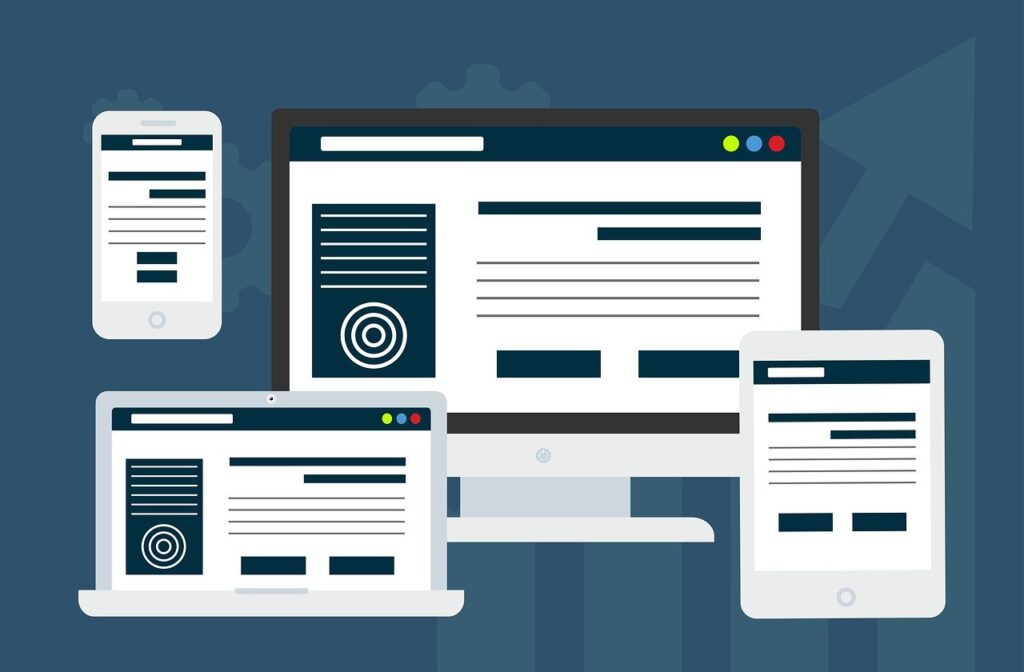Web design is an ever-evolving field, with trends that continue to shape how users interact with the digital world. In 2024, several key design elements are rising to prominence, transforming user experiences and pushing brands to stay on the cutting edge. Whether you’re looking to redesign your website or planning a new project, keeping an eye on these trends will help you stay ahead of the competition.
From AI integration to a continued focus on accessibility, here are the top 7 web design trends to watch in 2024.
1. Minimalist Design with Purpose
Minimalism continues to dominate web design, but it’s evolving with a purpose-driven focus. Instead of simply reducing content, minimalist designs in 2024 will prioritize user intent, stripping away unnecessary elements while enhancing usability. The new minimalism is clean, concise, and focused on ensuring users can easily find what they’re looking for.
Key Elements of Purpose-Driven Minimalism:
- White Space: The effective use of white space guides the user’s attention, making the website feel more open and easier to navigate.
- Clear Call-to-Actions (CTAs): Every element on a minimalist website should serve a purpose, particularly the CTAs, which should be prominent and inviting.
- Typography as a Focal Point: Bold, large typography will be used to create a visual hierarchy and direct users to key information.
2. Mobile-First Design: Why It’s Essential
Mobile-first design has become the gold standard, and in 2024, it’s no longer optional. With more than half of global website traffic coming from mobile devices, designing with mobile users in mind ensures your site is responsive, fast, and user-friendly.
Mobile-First Design Trends:
- Vertical Layouts: Designers are shifting from traditional horizontal layouts to vertical ones that suit mobile screens.
- Prioritizing Speed: Fast-loading, lightweight designs are essential for mobile-first websites, as slow load times can lead to higher bounce rates.
- Thumb-Friendly Navigation: Simplifying navigation for one-handed mobile use is becoming standard practice, with designers focusing on thumb zones for better accessibility.
3. AI-Powered Personalization
Artificial intelligence is revolutionizing web design by allowing for personalized, dynamic user experiences. In 2024, AI-driven personalization will continue to gain momentum, with websites using data to adapt content, layouts, and product recommendations to each user’s preferences in real time.
How AI Will Shape Web Design:
- Personalized Content: AI will enable websites to deliver customized content based on user behavior, preferences, and past interactions.
- Dynamic Layouts: Websites can adjust layouts to reflect user interests, ensuring the most relevant content is displayed.
- Chatbots and Virtual Assistants: AI-powered chatbots will become more intelligent, handling complex queries and providing instant customer support.
4. Immersive Scrolling Experiences
Interactive scrolling experiences are becoming increasingly popular, creating a more engaging way for users to interact with content. Parallax scrolling, in particular, is making a comeback, with designers using it to add depth and movement to websites.
Features of Immersive Scrolling:
- Parallax Effects: Background elements move at different speeds than foreground elements, creating a 3D-like effect.
- Storytelling Through Scrolling: Websites will use scrolling as a tool for storytelling, revealing content and animations as users move down the page.
- Scroll-Triggered Animations: These subtle animations can be triggered as users scroll, making the experience more interactive and visually appealing.
5. Dark Mode Design
Dark mode has been trending for a few years now, and it continues to be a favorite in 2024. With its visually striking look and benefits for battery life on mobile devices, dark mode offers a sleek and modern design option that reduces eye strain for users.
Why Dark Mode is Here to Stay:
- Energy Efficiency: Dark mode can help extend battery life on OLED and AMOLED screens, making it appealing to mobile users.
- Visual Impact: Dark backgrounds allow for vibrant colors and bold design elements to stand out, creating a strong visual contrast.
- User Preference: More websites are offering users the option to switch between dark and light modes, providing flexibility based on user preferences.
6. Accessibility as a Design Priority
Accessibility is no longer a side consideration; in 2024, it is a design priority. Ensuring your website is accessible to all users, including those with disabilities, is not only ethical but also increasingly a legal requirement in many regions. Websites need to adhere to Web Content Accessibility Guidelines (WCAG) to ensure they are usable by everyone.
Key Accessibility Features for 2024:
- Keyboard Navigation: Websites should be fully navigable via keyboard, especially for users with motor disabilities.
- Screen Reader Compatibility: Ensure that text and multimedia content are easily readable by screen readers, with appropriate alt text and transcripts.
- Color Contrast and Font Sizes: High-contrast designs and adjustable font sizes are essential for users with visual impairments.
7. Micro-Interactions for Better User Engagement
Micro-interactions are subtle animations or responses that occur when users engage with certain elements of a website. These small design details may seem minor, but they significantly enhance user experience by providing feedback, making the site more interactive, and guiding user behavior.
Common Micro-Interactions to Watch in 2024:
- Hover Effects: Elements that change when hovered over, such as buttons or images, create a sense of interactivity.
- Loading Animations: Instead of static loading indicators, dynamic animations can keep users engaged while waiting for content.
- Interactive Buttons: Buttons that animate when clicked or tapped provide feedback, making interactions feel more responsive.
Staying Ahead of the Curve in 2024
Web design trends in 2024 are focused on creating better user experiences, whether through AI personalization, accessibility, or mobile-first strategies. Incorporating these trends will not only ensure your website remains competitive but will also provide a more engaging, accessible, and visually appealing experience for your users.
To make the most of these trends, consider working with a professional web development team that stays up-to-date with the latest technologies and user behavior insights. Investing in a website redesign or update with these trends in mind can boost your business’s online presence and attract more customers in 2024.






